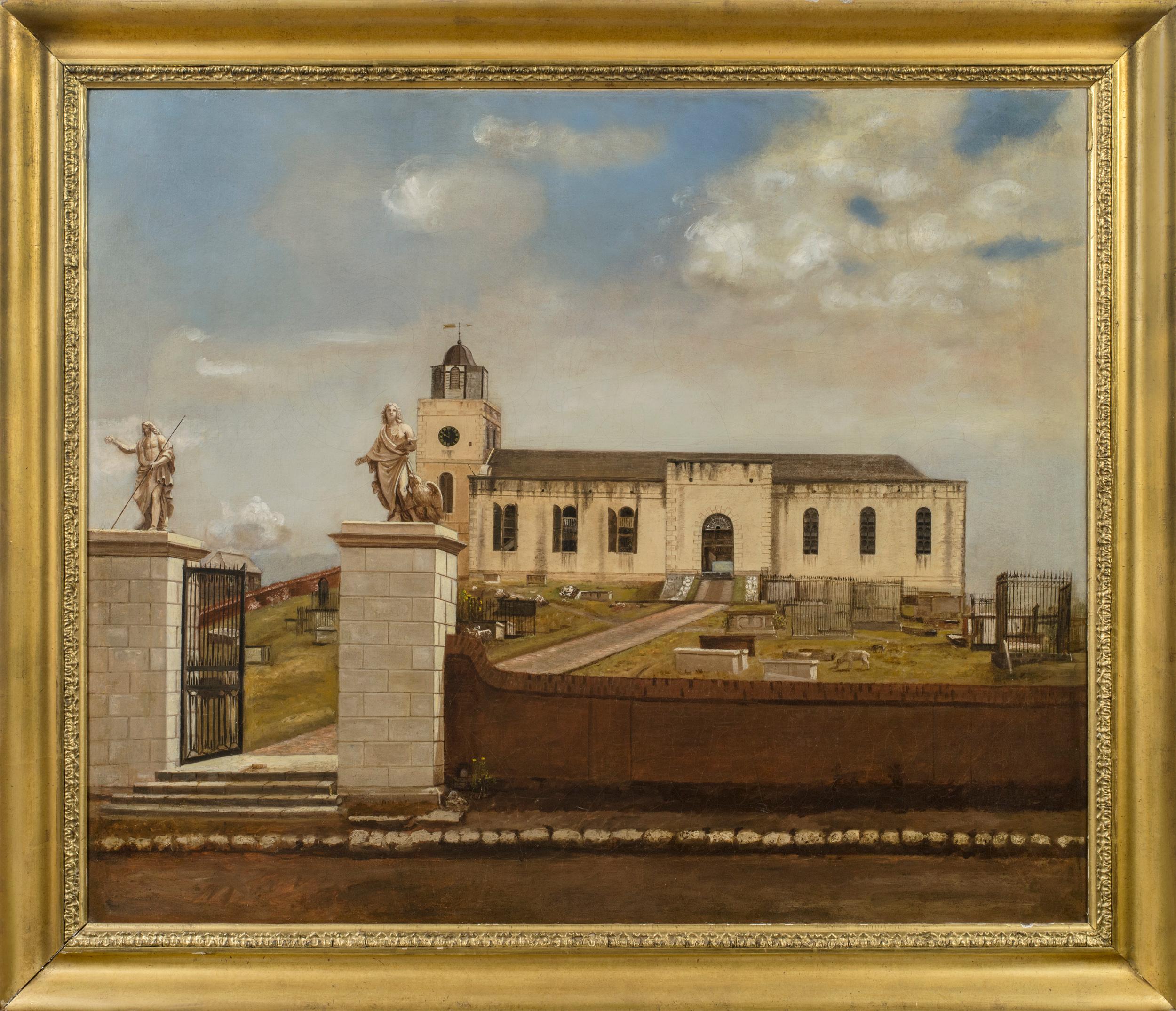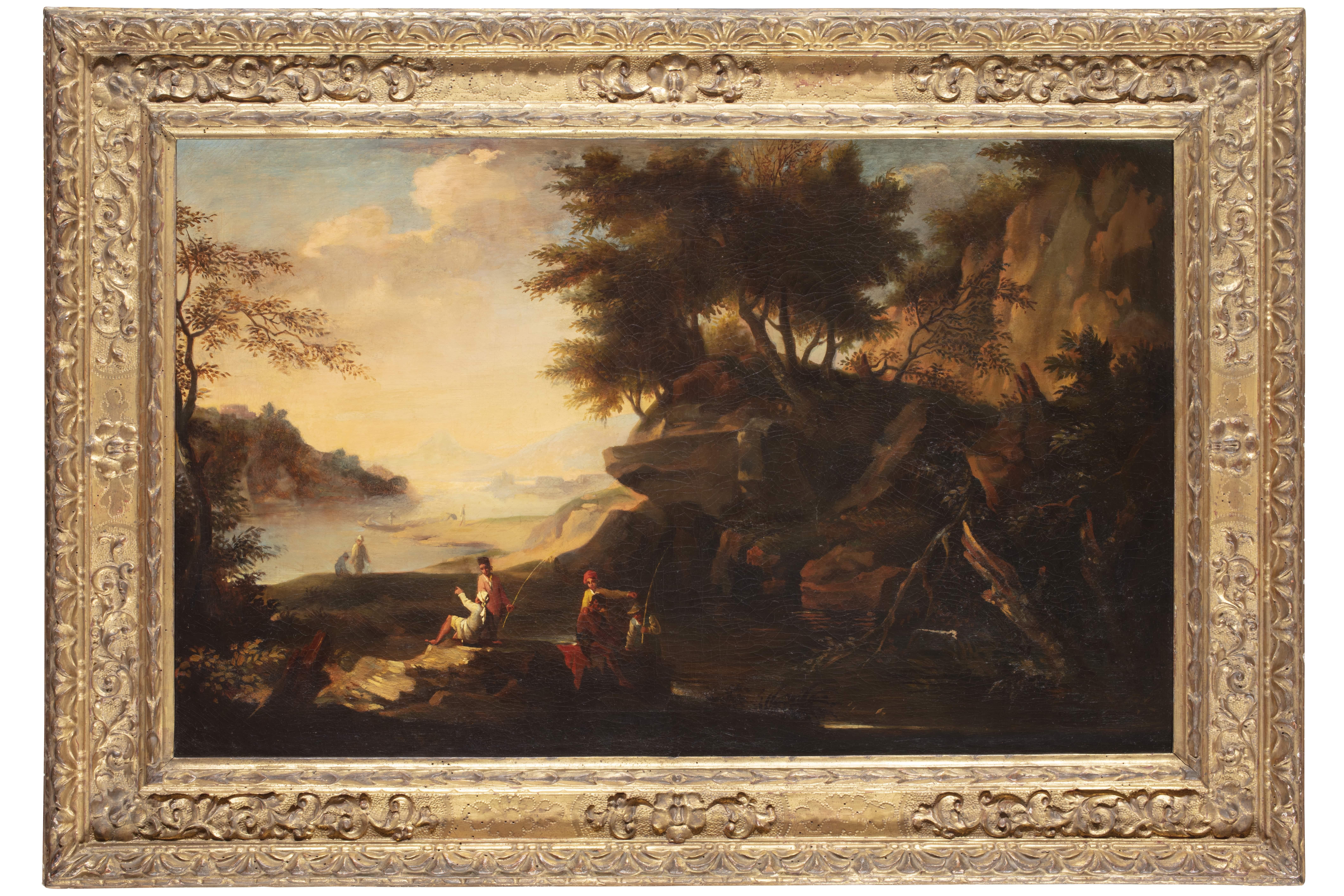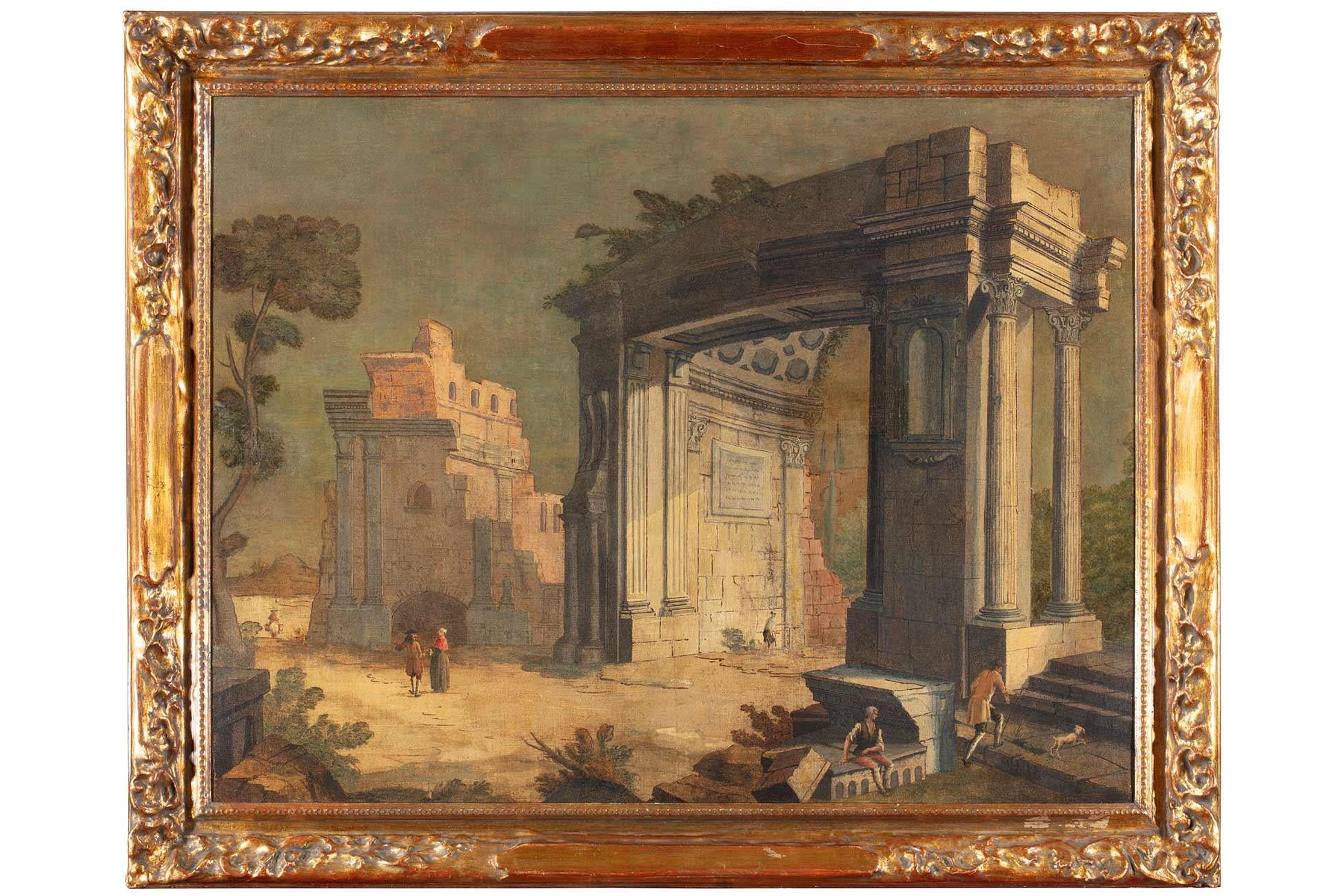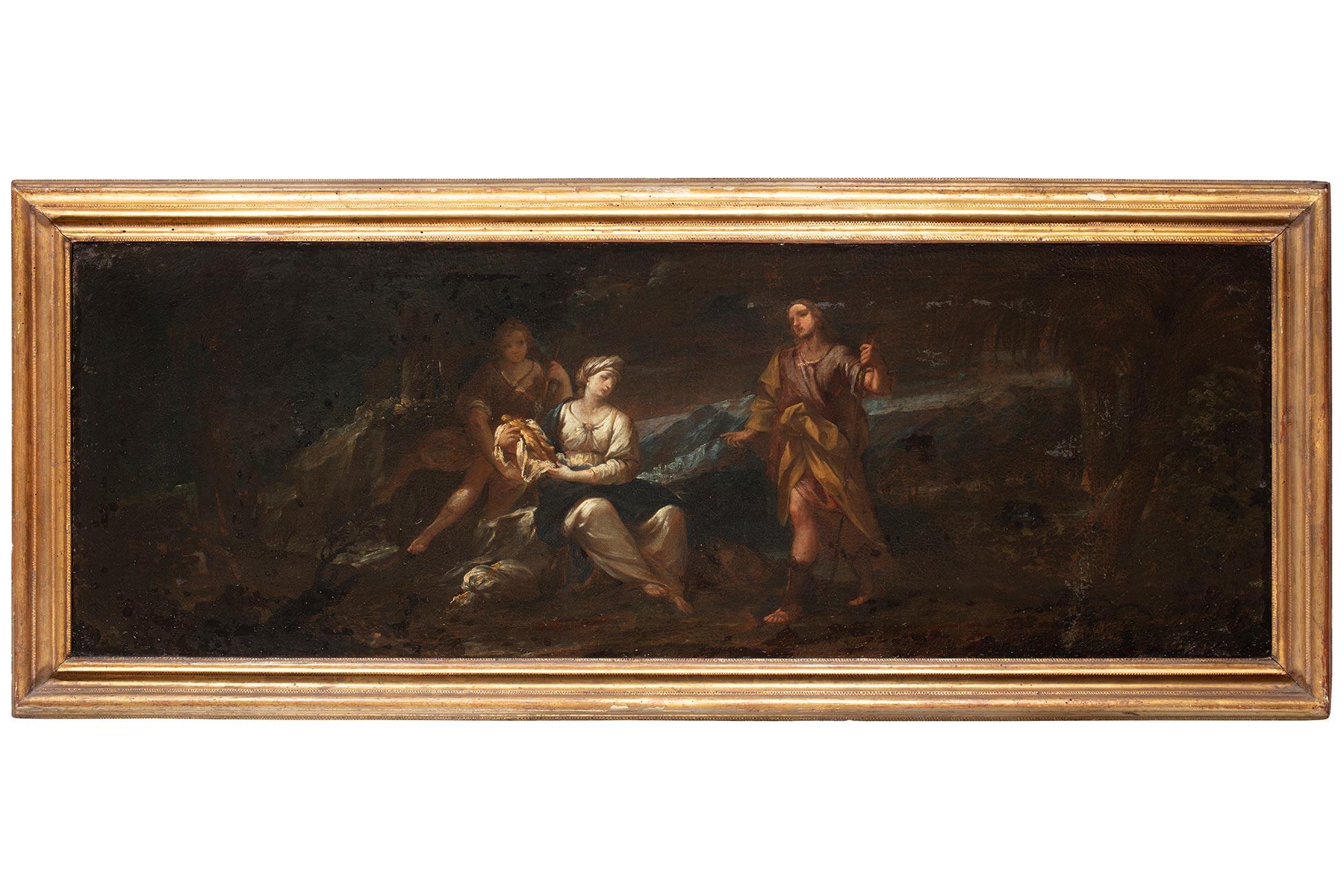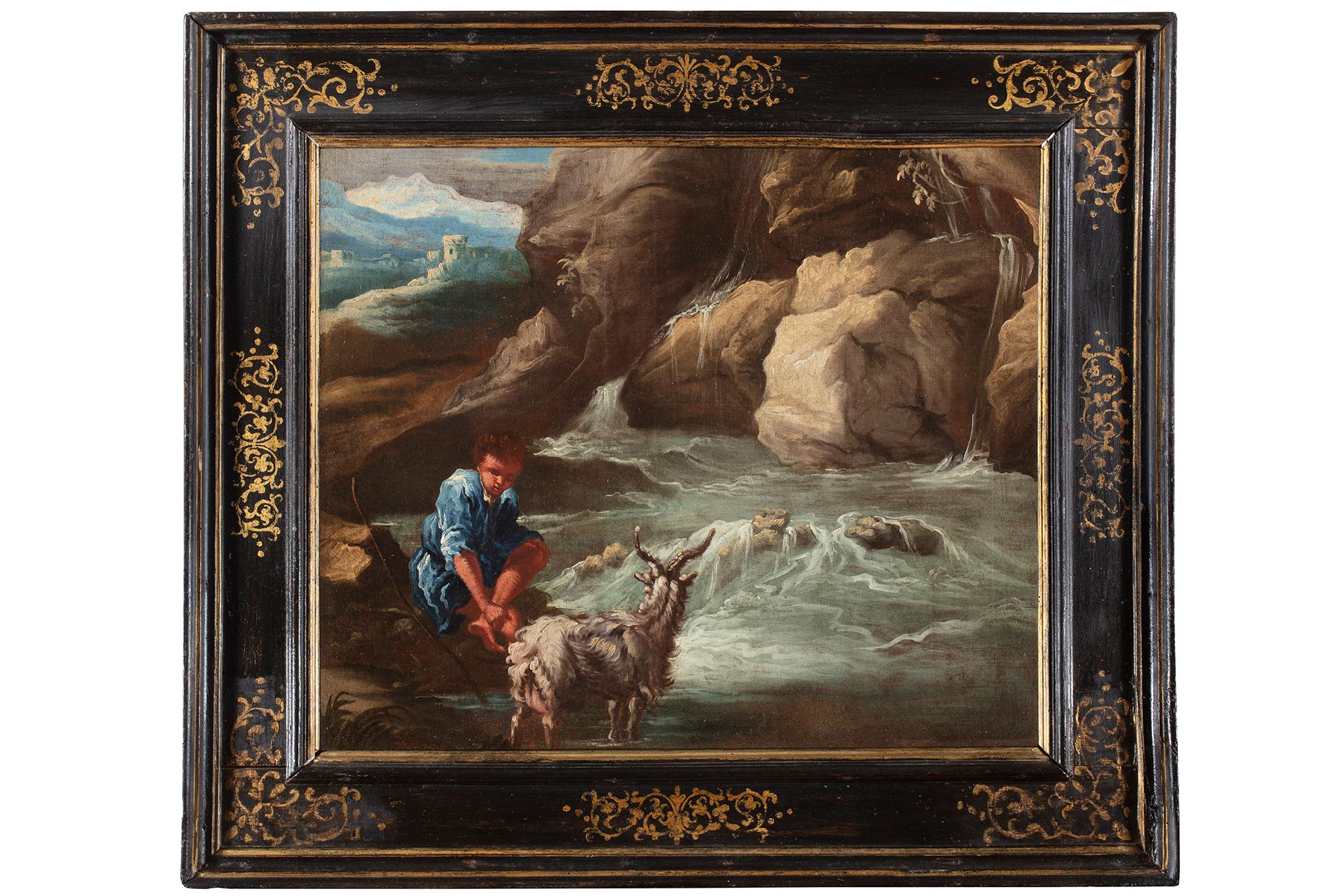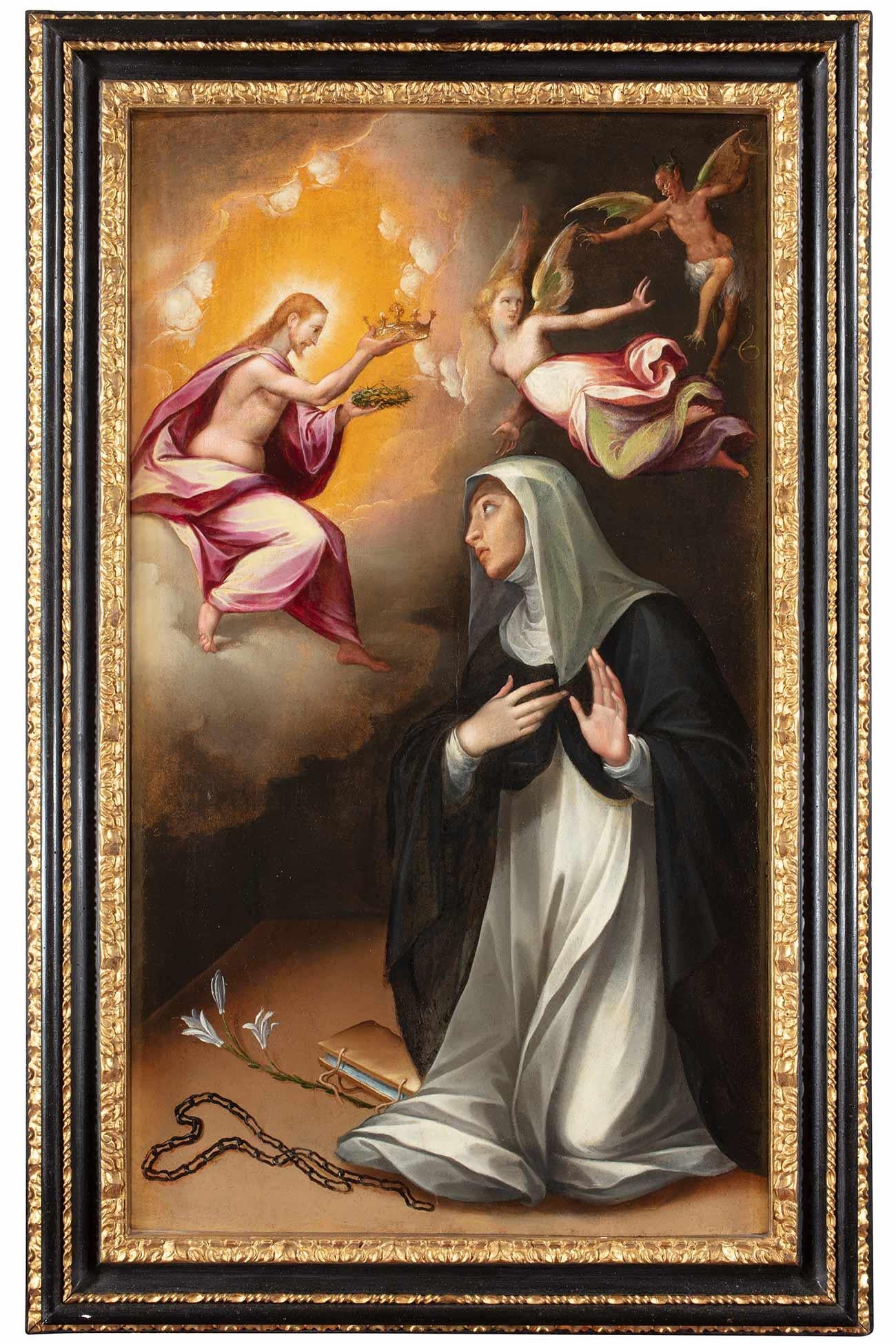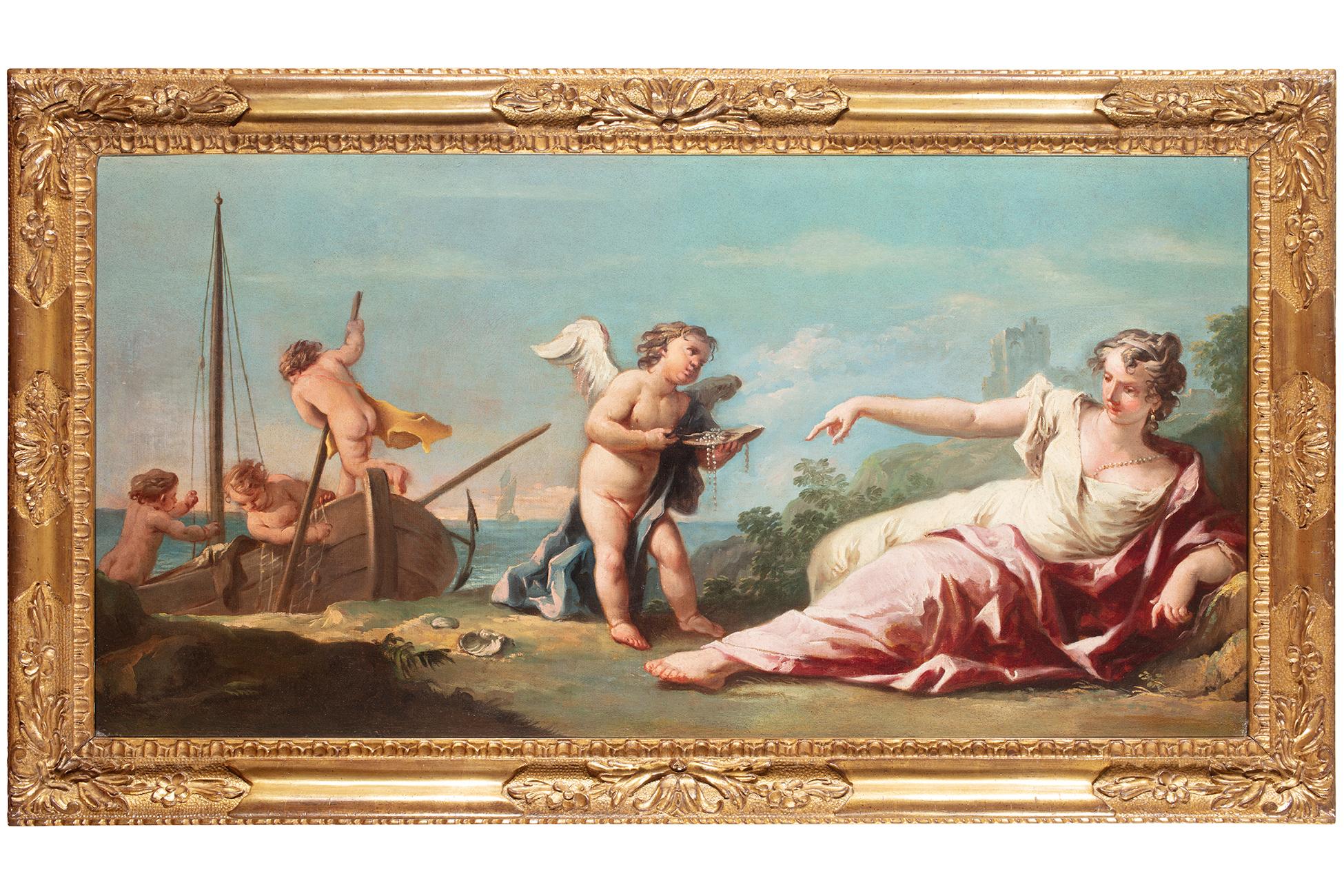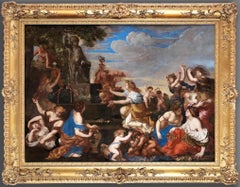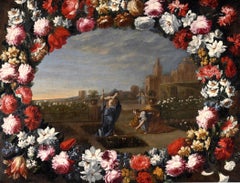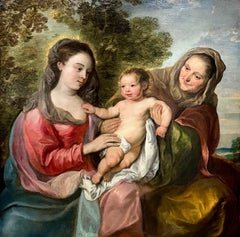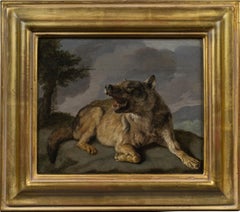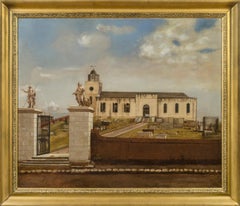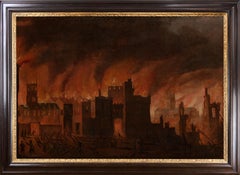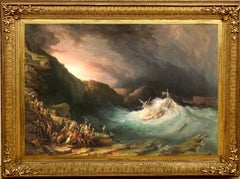
19th century British Marine painting - The storm - Seascape Lightening Ship
Want more images or videos?
Request additional images or videos from the seller
1 of 13
Richard Brydges Beechey19th century British Marine painting - The storm - Seascape Lightening Ship
About the Item
- Creator:Richard Brydges Beechey (1808 - 1895)
- Dimensions:Height: 37.01 in (94 cm)Width: 53.15 in (135 cm)Depth: 3.94 in (10 cm)
- Medium:
- Movement & Style:
- Period:
- Condition:Lovely and ready to hang. Under UV-light there is a repaired tear visible but other than that the painting is in a wonderful state of preservation with a stable canvas and wonderfully preserved colors. Relined.
- Gallery Location:Antwerp, BE
- Reference Number:1stDibs: LU142326813412
About the Seller
5.0
Platinum Seller
These expertly vetted sellers are 1stDibs' most experienced sellers and are rated highest by our customers.
Established in 2020
1stDibs seller since 2020
347 sales on 1stDibs
Typical response time: 1 hour
More From This SellerView All
- Huge 17th century old master - The feast of Bacchus - celebration PoussinLocated in Antwerp, BEHuge 17th century Old Master painting "Bacchus celebration" attributed to Niccolo de Simone The Bacchus celebration, also known as Bacchanalia, was...Category
17th Century Old Masters Figurative Paintings
MaterialsCanvas, Oil
- Large 17th century Italian old master - Noli me tangere - Christ in the gardenBy Pier Francesco CittadiniLocated in Antwerp, BELarge 17th century Italian old master - Noli me tangere - Christ in the garden with Mary Magdalene The Italian art historian Federico Zeri has conserved a painting in his archives w...Category
17th Century Old Masters Figurative Paintings
MaterialsCanvas, Oil
- Large 17th century religious family painting - Mary with Christ and AnnaLocated in Antwerp, BE17th century Old Master painting depicting the Infant Christ with Mary and St. Anne attributed to Nicolas de Liemaker The artist of the present work wonderfully captured the loving gaze of Maria, looking in awe at her child. One can sense the tenderness and love in her eyes. The eyes of Christ appears to be filled with wisdom and love and a finely painted aura crowns his and his mother's heads. St. Anne, Mary's mother, gently holds the infant whilst gazing adoringly at him. The painting is not only a beautiful depiction of Christ and his mother and grandmother, but also a sweet image of the tender bond between a mother's and their children. The vibrant and soft colours of the fabric create a soft cocoon around the figures and seem to further emphasis the beauty and importance of the depicted scenery and its protagonists. Nicolaas de Liemaecker (also spelled as Liemaker or Liemackere) was a Flemish painter born in Ghent in 1601. He was also known under the name Nicolaas Roose. His father was Jacobus de Liemaecker, a painter upon glass. Nicolaas is reported to have been trained by his father and Gaspard de Crayer II (1), an apprenticeship with Otto Van Veen has also been suggested. In 1624 he worked at the Court of the Bishop of Paderborn and for Ferdinand of Bavaria. He later returned to his native city, where he focused on religious and historical paintings. He was a very accomplished and celebrated artist who attained a high rank in his profession. He witnessed the baptisms of Pieter and Janne-Marie Van Hulle...Category
17th Century Old Masters Figurative Paintings
MaterialsOil, Canvas
$15,301 Sale Price20% Off - 17th century Flemish Old Master painting - Countryside landscape - RubensLocated in Antwerp, BE17th century Flemish old master painting depicting a peaceful countryside scenery by Lucas Van Uden Lucas Van Uden's life unfolded against the backdrop of the rich artistic tapestry...Category
17th Century Old Masters Landscape Paintings
MaterialsCanvas, Oil
- 17th century Flemish Italian Old Master - The baptism of Christ - ReligiousLocated in Antwerp, BE17th century Flemish old Master painting The present painting is truly a little jewel with its vibrant colours and skilful brushwork. It depicts the Baptism of Christ, a depiction of a tale filled with hope and positivity, it is a very fine example of Malo's talent. We would like to thank Anna Orlando for her assistance in cataloguing this painting. A copy of her entry on this painting will be given to the buyer. She writes about the present painting: The painting illustrated here, unpublished, refers to Vincenzo (Vincent) Malò, a Flemish artist active in Italy and in particular in Genoa in the first half of the seventeenth century, by now well known. The critics who started studying him in the sixties of the last century recognized the initial confusion of our painter with Vincenzo Alemanno (1595-1675); many documents subsequently traced both in the Genoese and Roman archives have partially specified his biographical details, but certainly his identity. Son of a certain Nicola, Vincent trained in Antwerp with David Teniers the Elder and then with Rubens, he was intermittently enrolled in the painters' guild, between 1623 and 1634. It is unlikely that he first arrived in Genoa in 1625 , when the city was at war against the Savoys, and it is entirely probable that his stay in Italy fell between 1634 and the year of his death, documented in Rome in 1644. It were about ten fertile years, also thanks to the lessons from Rubens who had taught him to paint speedily...Category
17th Century Old Masters Figurative Paintings
MaterialsCanvas, Oil
- Huge late 17th early 18th century Italian floral oil - Peacock doves and a duckLocated in Antwerp, BEHuge late 17th, early 18th century Italian Old master - A peacock doves and a duck holding flowers in a park landscape at sunset, attr. Angelo Maria Crivelli In a peaceful park land...Category
17th Century Old Masters Animal Paintings
MaterialsCanvas, Oil
You May Also Like
- A WolfLocated in New York, NYProvenance: The Marchesi Strozzi, Palazzo Strozzi, Florence Sale, Christie’s, London, May 20, 1993, lot 315, as by Carl Borromaus Andreas Ruthart...Category
17th Century Old Masters Animal Paintings
MaterialsCanvas, Paper, Oil
- View of St. John’s Cathedral, AntiguaLocated in New York, NYProvenance: Robert Hollberton, Antigua, ca. 1841 Private Collection, New York The present painting depicts Old St. John’s Cathedral on the island of Antigua. The church was erected in the 1720s on the designs of the architect Robert Cullen. It measured 130 feet by 50 feet with north and south porches 23 x 20 ½ feet. The tower, 50 feet high with its cupola, was added in 1789. The church was elevated to the status of a cathedral, but disaster struck in the form of an earthquake that destroyed the building on 8 February 1843. A memorandum of that date relates the event: “On Wednesday, 8th February, 1843, this island was visited by a most terrific and destructive earthquake. At twenty minutes before eleven o’clock in the forenoon, while the bell was ringing for prayers, and the venerable Robert Holberton was in the vestry-room, awaiting the arrival of persons to have their marriage solemnized, before the commencement of the morning service, the whole edifice, from one end to the other, was suddenly and violently agitated. Every one within the church, after the first shock, was compelled to escape for his life. The tower was rent from the top to the bottom; the north dial of the clock precipitated to the ground with a dreadful crash; the east parapet wall of the tower thrown upon the roof of the church; almost the whole of the north-west wall by the north gallery fell out in a mass; the north-east wall was protruded beyond the perpendicular; the altar-piece, the public monument erected to the memory of lord Lavington, and the private monuments, hearing the names of Kelsick, Warner, Otley, and Atkinson, fell down piecemeal inside; a large portion of the top of the east wall fell, and the whole of the south-east wall was precipitated into the churchyard, carrying along with it two of the cast-iron windows, while the other six remained projecting from the walls in which they had been originally inserted; a large pile of heavy cut stones and masses of brick fell down at the south and at the north doors; seven of the large frontpipes of the organ were thrown out by the violence of the shock, and many of the metal and wooden pipes within displaced; the massive basin of the font was tossed from the pedestal on which it rested, and pitched upon the pavement beneath uninjured. Thus, within the space of three minutes, this church was reduced to a pile of crumbling ruins; the walls that were left standing being rent in every part, the main roof only remaining sound, being supported by the hard wood pillars.” The entrance from the southern side into the cathedral, which was erected in 1789, included two imposing statues, one of Saint John the Divine and the other of Saint John the Baptist in flowing robes. It is said that these statues were confiscated by the British Navy from the French ship HMS Temple in Martinique waters in 1756 during the Seven Years’ War and moved to the church. The statues are still in situ and can be seen today, much as they appeared in Bisbee’s painting, but with the new cathedral in the background (Fig. 1). Little is known of the career of Ezra Bisbee. He was born in Sag Harbor, New York in 1808 and appears to have had a career as a political cartoonist and a printmaker. His handsome Portrait of President Andrew Jackson is dated 1833, and several political lithographs...Category
19th Century Old Masters Landscape Paintings
MaterialsCanvas, Oil
- Early oil depicting the Great Fire of LondonLocated in London, GBThe Great Fire of London in September 1666 was one of the greatest disasters in the city’s history. The City, with its wooden houses crowded together in narrow streets, was a natural fire risk, and predictions that London would burn down became a shocking reality. The fire began in a bakery in Pudding Lane, an area near the Thames teeming with warehouses and shops full of flammable materials, such as timber, oil, coal, pitch and turpentine. Inevitably the fire spread rapidly from this area into the City. Our painting depicts the impact of the fire on those who were caught in it and creates a very dramatic impression of what the fire was like. Closer inspection reveals a scene of chaos and panic with people running out of the gates. It shows Cripplegate in the north of the City, with St Giles without Cripplegate to its left, in flames (on the site of the present day Barbican). The painting probably represents the fire on the night of Tuesday 4 September, when four-fifths of the City was burning at once, including St Paul's Cathedral. Old St Paul’s can be seen to the right of the canvas, the medieval church with its thick stone walls, was considered a place of safety, but the building was covered in wooden scaffolding as it was in the midst of being restored by the then little known architect, Christopher Wren and caught fire. Our painting seems to depict a specific moment on the Tuesday night when the lead on St Paul’s caught fire and, as the diarist John Evelyn described: ‘the stones of Paul’s flew like grenades, the melting lead running down the streets in a stream and the very pavements glowing with the firey redness, so as no horse, nor man, was able to tread on them.’ Although the loss of life was minimal, some accounts record only sixteen perished, the magnitude of the property loss was shocking – some four hundred and thirty acres, about eighty per cent of the City proper was destroyed, including over thirteen thousand houses, eighty-nine churches, and fifty-two Guild Halls. Thousands were homeless and financially ruined. The Great Fire, and the subsequent fire of 1676, which destroyed over six hundred houses south of the Thames, changed the appearance of London forever. The one constructive outcome of the Great Fire was that the plague, which had devastated the population of London since 1665, diminished greatly, due to the mass death of the plague-carrying rats in the blaze. The fire was widely reported in eyewitness accounts, newspapers, letters and diaries. Samuel Pepys recorded climbing the steeple of Barking Church from which he viewed the destroyed City: ‘the saddest sight of desolation that I ever saw.’ There was an official enquiry into the causes of the fire, petitions to the King and Lord Mayor to rebuild, new legislation and building Acts. Naturally, the fire became a dramatic and extremely popular subject for painters and engravers. A group of works relatively closely related to the present picture have been traditionally ascribed to Jan Griffier...Category
17th Century Old Masters Landscape Paintings
MaterialsOil, Canvas
- The Parade of Swiss Guards a painting on canvas by Gabriel de Saint-AubinLocated in PARIS, FRIn this painting, Gabriel de Saint-Aubin, the great chronicler of the reign of Louis XV, takes us to the annual parade of the Swiss Guards at the Plaine de...Category
1760s Old Masters Figurative Paintings
MaterialsCanvas, Oil
- View of Ponte Milvio in RomeLocated in Roma, RMNorthern painter active in Rome in the second half of the 17th century, View of Ponte Milvio Oil painting on canvas 73 x 97 cm in coeval Roman Salvator Rosa frame.Category
18th Century and Earlier Old Masters Landscape Paintings
MaterialsCanvas, Oil
- 17th Century by Jacob de Heusch Pair of Landscapes Oil on CanvasLocated in Milano, LombardiaDimensions: 50 x 80 cm without frame, 70 x 100 cm with frame. Gilded, carved, sculpted and chiselled wooden box frames. Publications: Jacob de Heusch (1656 – 1701). Un pittore ol...Category
17th Century Old Masters Landscape Paintings
MaterialsCanvas, Oil
Recently Viewed
View AllMore Ways To Browse
Seascape Ireland
Richard Storms
B Charm
Near Eastern
William Skilling Artist
Austrian Mountain
Paris Scene Oil Painting 1950
Italian Gardens Scenes
Farm House Vintage
Dan May
Impressionist Portrait Children
Oil On Board Print
A Mediterranean View
Glasgow Institute
Italian Cypress
Round Frame Landscape Painting
Large Farm Landscapes
Oil Paintings Nineteenth Century

